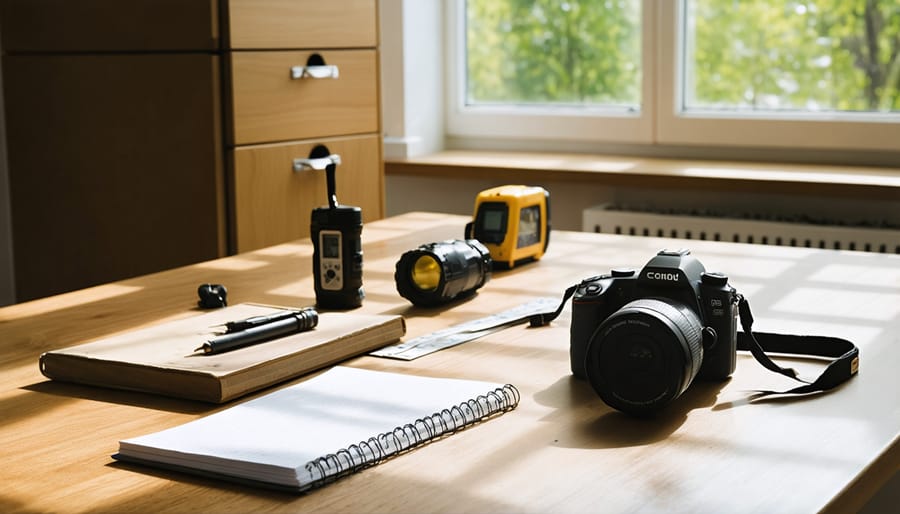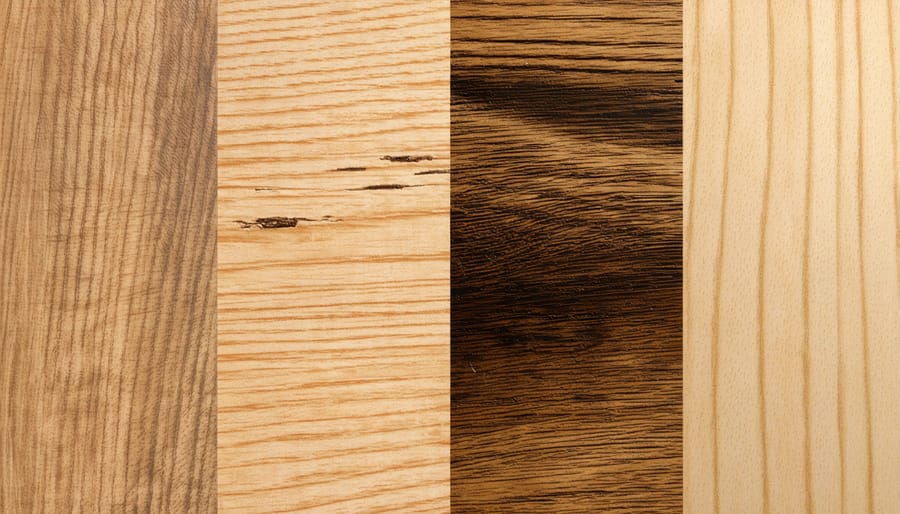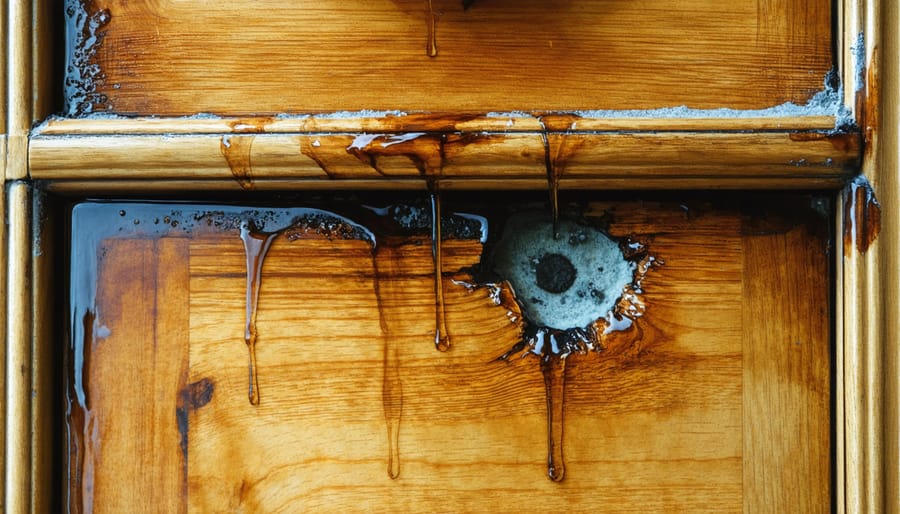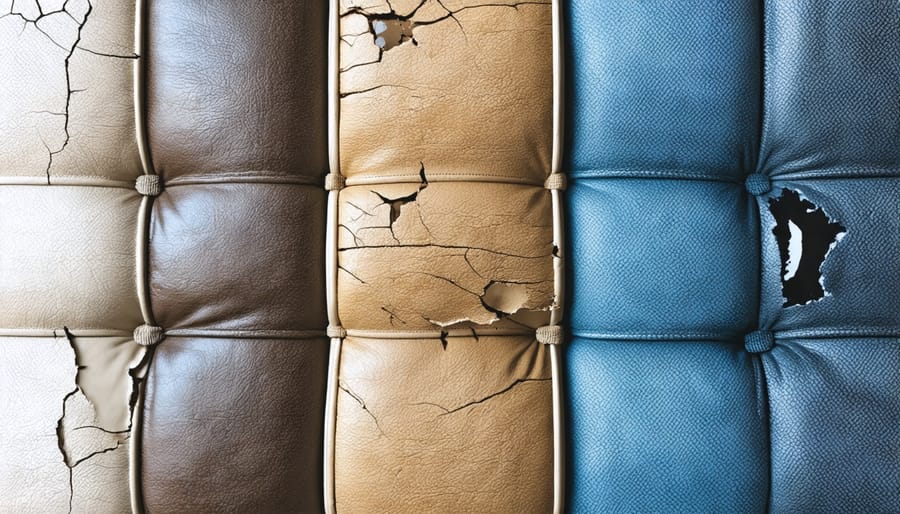
Property damage assessment requires precise classification to ensure documentation insurance companies can’t refuse. Understanding the four major categories of property damage—structural, cosmetic, environmental, and mechanical—enables property owners and insurance adjusters to accurately evaluate losses and determine appropriate restoration strategies.
Whether dealing with catastrophic structural failures or minor surface blemishes, proper categorization directly impacts claim outcomes and repair protocols. Structural damage compromises building integrity, cosmetic damage affects appearance without compromising function, environmental damage results from natural elements, and mechanical damage involves system failures or equipment breakdown.
This comprehensive guide examines each classification in detail, providing clear identification markers and documentation requirements essential for successful insurance claims and restoration planning. Learn to distinguish between these categories to protect your investment and ensure proper coverage when damage occurs.

Surface damage is often the most visible form of property deterioration and requires careful documentation for insurance purposes. Begin by examining surfaces under good lighting, preferably natural daylight, to identify scratches, scuffs, dents, or discoloration. Use a systematic approach by dividing larger surfaces into sections and documenting each area thoroughly.
When identifying surface damage, note the size, depth, and pattern of each imperfection. Scratches may appear as linear marks with varying depths, while dents typically present as circular or irregular depressions. Pay special attention to changes in texture, such as roughness or smoothness compared to the surrounding area.
Take clear, well-lit photographs from multiple angles, including close-ups with a ruler or measuring tape in frame for scale reference. Document the location of each instance of damage on a floor plan or diagram. Note any relevant details about the damage’s possible cause, such as impact marks or water exposure.
For thorough documentation, create a detailed inventory listing each damaged surface, including walls, floors, furniture, and fixtures. This comprehensive approach ensures nothing is overlooked during the assessment process and provides essential information for insurance claims or repair estimates.
When documenting property damage, proper photography and description techniques are essential for insurance claims and repair assessments. Start by capturing wide-angle shots of the entire damaged area, then progressively move closer for detailed images. Ensure proper lighting and use a ruler or measuring tape in photos for scale reference.
Take photos from multiple angles, including straight-on, side views, and close-ups of specific damage patterns. For scratches and surface damage, use raking light (light positioned at an angle) to highlight depth and severity. When photographing water damage, document both the visible stains and any resulting material swelling or warping.
In written descriptions, be specific about location, size, and depth of damage. For example, instead of “scratch on table,” write “6-inch linear scratch on dining table surface, approximately 2mm deep, located 4 inches from front edge.” Note any changes in texture, color, or material integrity.
Create a systematic documentation process by numbering photos and cross-referencing them with written descriptions. Remember to date all documentation and maintain digital backups of all photos and notes for future reference.
When evaluating structural damage to furniture, it’s essential to follow a systematic approach that insurance companies recognize. Begin by examining the fundamental components that affect the piece’s stability and functionality. Look for signs of compromised joints, broken support beams, or damaged load-bearing elements. These issues often determine what insurance covers in your claim.
Document all visible cracks, splits, or separations in the frame using clear, well-lit photographs from multiple angles. Pay special attention to stress points where different components meet, such as chair legs joining the seat or table supports connecting to the top. Make detailed notes about any wobbling, instability, or unusual movement when the piece is in use.
For upholstered furniture, carefully inspect the internal frame beneath the fabric. Springs, webbing, and support systems should be assessed for damage that might not be immediately visible from the outside. Use a gentle pressing motion to detect any collapsed areas or broken internal components.
Remember to date all documentation and maintain a chronological record of when the damage occurred or was discovered. This helps establish a clear timeline for insurance purposes and ensures proper assessment of the damage’s extent.
When documenting structural damage, thoroughness is essential for insurance claims and repair assessments. Begin by photographing the entire affected area from multiple angles, ensuring both wide shots and close-ups capture the full extent of the damage. Take detailed notes describing the location, size, and nature of each structural issue, including measurements where applicable.
Pay special attention to load-bearing elements, such as support beams, posts, or joints. Document any visible cracks, splits, or warping, noting their length, width, and pattern. For furniture pieces, record any compromise to the frame integrity, loose joints, or separation of structural components.
Include environmental factors that may have contributed to the damage, such as water exposure, temperature fluctuations, or impact events. Note any visible signs of previous repairs or modifications that could affect the current structural condition.
Create a chronological timeline of when the damage was first noticed and any progression observed. This information helps insurance adjusters and repair professionals accurately assess the situation and determine appropriate restoration methods.
Remember to date all photographs and maintain a detailed log of your documentation process, which will prove invaluable during claim filing and repair planning.
Water damage can manifest in various ways, making early detection crucial for preventing further deterioration. Common indicators include dark water spots, discoloration, swelling, warping, or bubbling of surfaces. In wooden furniture, you might notice softened areas, splitting joints, or a musty odor. Metal components may show signs of rust or corrosion, while upholstered pieces often develop water rings or mold growth.
To properly document water damage, start by photographing the affected areas from multiple angles, ensuring good lighting and clear focus. Include close-up shots of specific damage points and wider shots showing the item’s overall condition. Measure and note the dimensions of damaged areas, and record any visible water lines or moisture patterns.
Keep detailed notes about when you first noticed the damage and its possible source, such as flooding, leaks, or humidity issues. This information is particularly valuable for insurance claims. If possible, preserve samples of damaged materials or take moisture readings using a humidity meter. Time-stamp your documentation and maintain a chronological record of any changes in the damage’s appearance or severity.
Remember that some water damage may not be immediately visible, so regular inspection of your property is essential for early detection and prevention of extensive damage.

Documenting environmental damage requires a systematic approach to capture all relevant details. Start by photographing the affected area from multiple angles, ensuring both wide shots that show the full scope and close-ups that detail specific damage points. Use proper lighting and include a ruler or measuring tape in photos for scale reference.
Create a detailed written log describing environmental conditions that contributed to the damage, such as humidity levels, temperature fluctuations, or exposure to direct sunlight. Note any visible mold growth, water stains, or discoloration patterns. For water damage, measure and record moisture levels using a moisture meter, documenting readings from multiple points.
Maintain a timeline of when the damage was first noticed and how it has progressed. Include relevant weather records, maintenance logs, or building inspection reports that might have contributed to the environmental damage. If possible, collect samples of affected materials in sealed containers for further analysis.
Consider engaging environmental testing services to measure air quality, detect harmful substances, or assess mold types when applicable. Keep all test results, professional assessments, and remediation recommendations in your documentation file.

When assessing fabric and material damage, thorough documentation is essential for insurance claims and restoration planning. Start by identifying the type of material affected – whether it’s leather, cotton, synthetic blends, or specialty fabrics. Photograph the damaged area from multiple angles, ensuring both close-up shots that show the texture and extent of damage, as well as wider shots that establish the context of the damage within the piece.
Measure and record the dimensions of affected areas using a ruler or measuring tape in your photos for scale reference. Note any discoloration, tears, burns, or stains, describing their appearance, size, and location in detail. For upholstered furniture, document both the visible fabric damage and any underlying damage to padding or structural elements.
Include details about the material’s original condition, age, and any pre-existing wear patterns. If possible, locate manufacturer tags or original purchase documentation to establish the furniture’s value and materials composition. This information helps insurance adjusters accurately assess replacement costs and helps restoration professionals determine the most appropriate repair methods.
When documenting upholstery damage, start by photographing the entire piece of furniture from multiple angles to establish context. Take close-up shots of specific damage areas using good lighting and a ruler or measuring tape in the frame for scale. Document any manufacturer’s tags, labels, or serial numbers that help identify the piece.
Create detailed written descriptions noting the type of fabric, color, pattern, and specific damage characteristics. Include measurements of tears, burns, or stains, and describe their location using specific reference points (e.g., “6-inch tear on left armrest, 4 inches from the front”).
Collect supporting documentation such as original purchase receipts, warranty information, and any professional cleaning or maintenance records. For water damage, note the source and duration of exposure. For chemical damage, document the type of substance involved and when the incident occurred.
Consider making a video walkthrough of the damage, especially for complex cases. This can help capture details that might be missed in still photos and provide a more comprehensive view of the damage extent.
Remember to date all documentation and maintain a organized file system for easy reference during insurance claims or restoration planning.
Understanding the four major classifications of property damage is crucial for successful insurance claims and proper documentation. By familiarizing yourself with these categories – structural, water, fire, and impact damage – you can better assess and report incidents affecting your furniture and belongings. Remember to thoroughly document all damage through detailed photographs, written descriptions, and professional assessments when applicable.
To maximize your insurance claim value, always maintain accurate records of your furniture’s original purchase price, age, and condition prior to damage. Keep all repair estimates, receipts, and correspondence with insurance adjusters organized and readily accessible.
Key takeaways for successful claims include:
– Document damage immediately after discovery
– Take multiple photos from various angles
– Secure professional assessments when needed
– Keep detailed records of all communications
– File claims promptly within required timeframes
– Consider consulting with restoration experts
By following these guidelines and understanding how different types of damage are classified, you’ll be better prepared to navigate the claims process and ensure fair compensation for your damaged property.